55 Powerful Horse Statistics
This page contains affiliate links. We may earn money or products from the companies mentioned in this post through our independently chosen links, which earn us a commission. Learn More

When you think about the most popular pets in the United States, images of cats and dogs probably come to mind. While cats and dogs are certainly at the top of the list in terms of pet popularity, horses don’t fall too far behind (though some don’t consider them pets).
Horses have been an essential component of American culture since our nation was founded.
Well before Christopher Columbus brought Spanish horses to the Americas in 1493, the genus Equus actually evolved in North America. Unfortunately, horses became extinct on the continent somewhere between 8,000 and 12,000 years ago but they have since made a raging comeback.
Spanish horses (Equus caballus) were reintroduced in North America – first in the Virgin Islands – and then to the continental mainland in the early 1500s.
Eventually, horses spread north, supplemented by imports from British, European, and French colonists. Native Americans quickly developed their own unique horse culture – one that remains distinct from European equine traditions.
Horses have always been part of American life, though their use understandably began to decline in the 20th century with the rise of widespread mechanization. Today, horses are primarily used for recreation and entertainment, though some are still trained to perform specialized functions.
Check out our powerful horse statistics infographic and keep reading to learn more!
Top 10 Horse Statistics In The U.S.
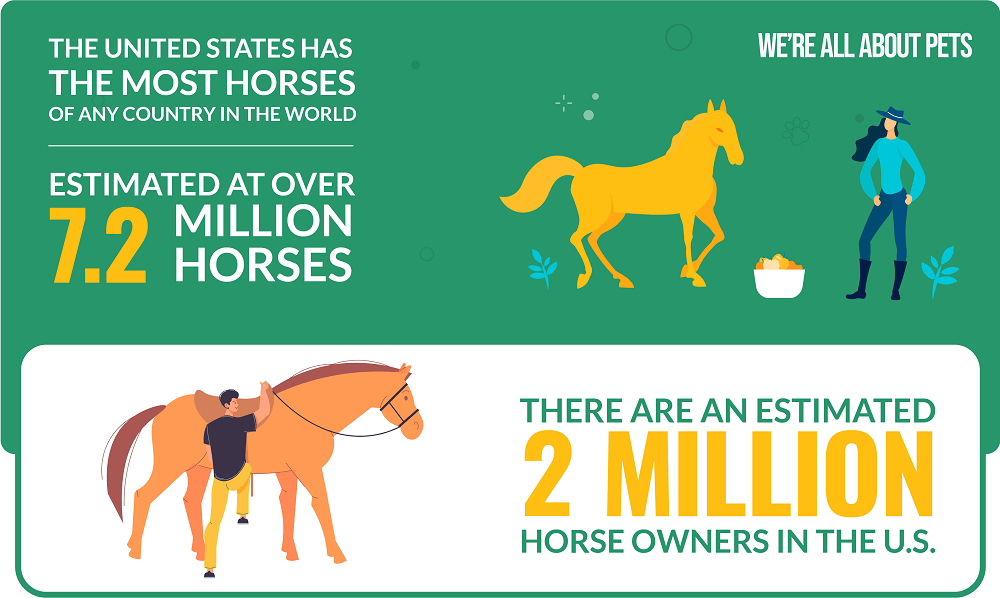
- The United States has the most horses of any country in the world, estimated at over 7.2 million horses.
- The horse industry in the United States is worth roughly $50 billion.
- Including recreation and horse care, the horse industry creates nearly 1 million jobs in the United States.
- The wild horse population in the United States exceeds 90,000 in just 10 western U.S. states.
- Left uncontrolled, wild horse populations increase their numbers by 15% to 20% each year. This means that every four to five years, wild horses double their population.
- Texas has the most horses of all 50 states, estimated over 767,000. California is in second place (about 534,500 horses) and Florida comes in third (387,300).
- The most popular reason for keeping horses in the U.S. is recreation with over 3.1 million. Showing horses is second in popularity with 1.2 million, followed by 1.2 million racehorses and over 500,000 work horses.
- The two popular horse breeds in the U.S. are the Quarter Horse (2.1 million) and the Thoroughbred (1.1 million).
- The highest price paid for a working horse was $112,500. The 2-year-old Belgian stallion was sold at auction in Gifford, Illinois in 2003.
- There are an estimated 2 million horse owners in the united states and a total of 7.1 million Americans involved in the hose industry.
The Most Popular Horse Breeds In The U.S.
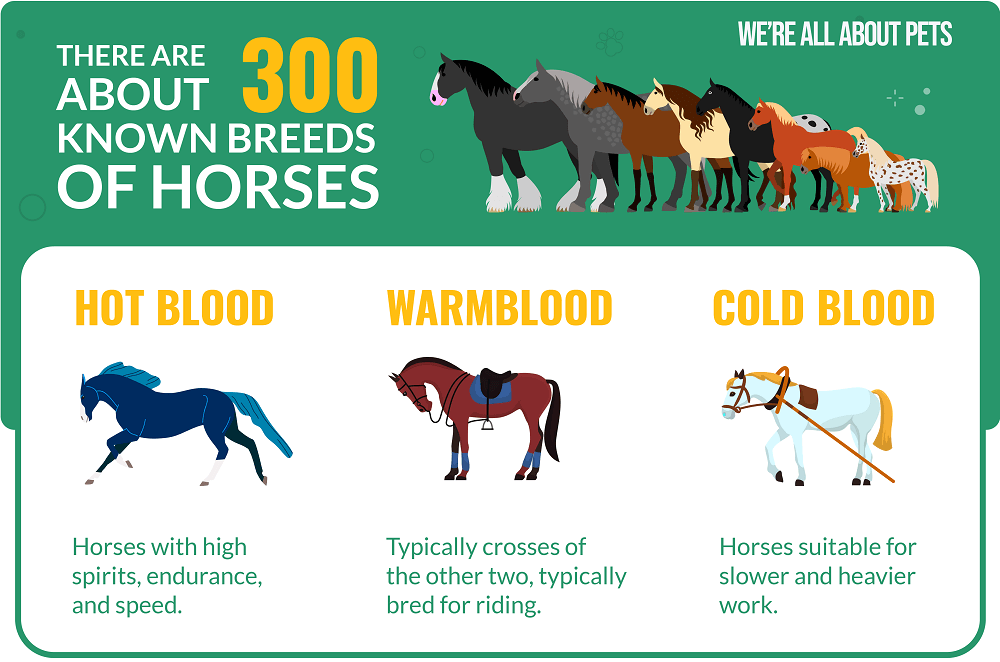
- There are about 300 known breeds of horses, divided into three categories:
- Hot blood – Horses with high spirits, endurance, and speed.
- Cold blood – Horses suitable for slower and heavier work.
- Warmblood – Typically crosses of the other two, typically bred for riding.
- The American Quarter Horse and the Thoroughbred are the two most popular horse breeds in the U.S. with 3.1 million and 1.29 million, respectively, according to 2017 statistics.
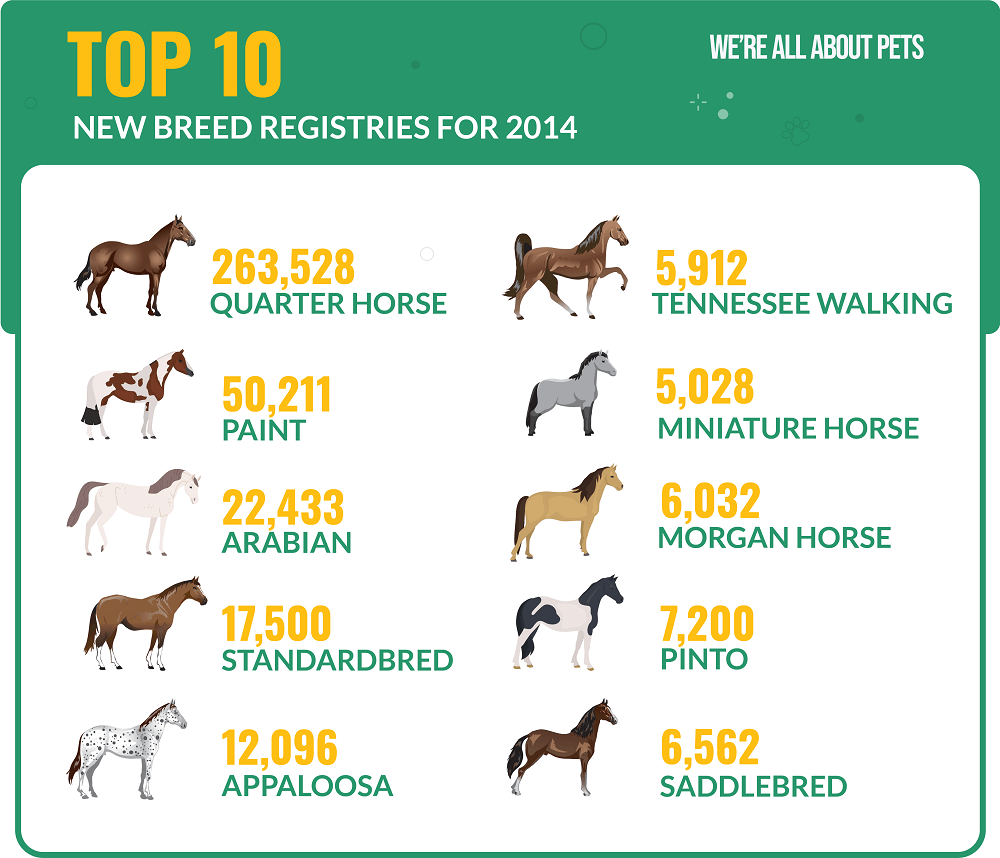
3. Here are the top 10 new breed registries for 2014:
-
- Quarter Horse – 263,528
- Paint – 50,211
- Arabian – 22,433
- Standardbred – 17,500
- Appaloosa – 12,096
- Tennessee Walking – 5,912
- Miniature Horse – 5,028
- Morgan Horse – 6,032
- Pinto – 7,200
- Saddlebred – 6,5622.
2. Between 1991 and 2005, the American Quarter Horse accounted for nearly 60% of breed registrations in the U.S.
3. Miniature Horses constituted the smallest fraction of breed registries in 1998 (1.5%) but the American Miniature Horse Association reports growth of 83,361 new registries by 2003.
15 Amazing Facts About Horses
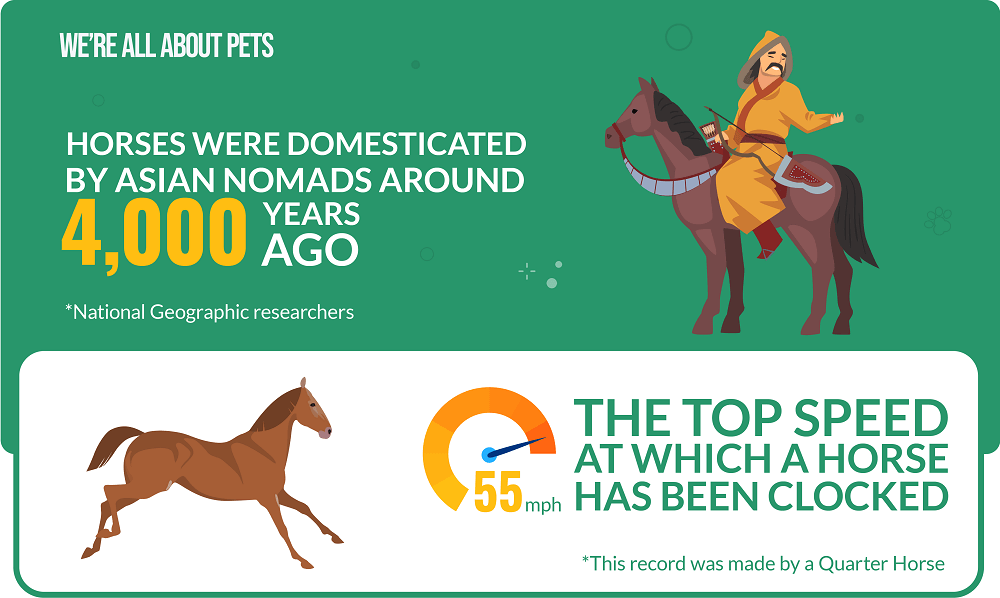
- National Geographic researchers estimate that horses were domesticated by Asian nomads around 4,000 years ago.
- Horses are capable of recognizing facial expressions and can remember their trainer even after years of separation.
- A male horse that has not been neutered (gelded) is called a stallion. Stallions are typically bred after 3 years of age, though they often become sexually mature as early as 1 year.
- Horses sleep in very short intervals of no more than 15 minutes at a time. On average, horses only need about 2 ½ hours of sleep per 24-hour period.
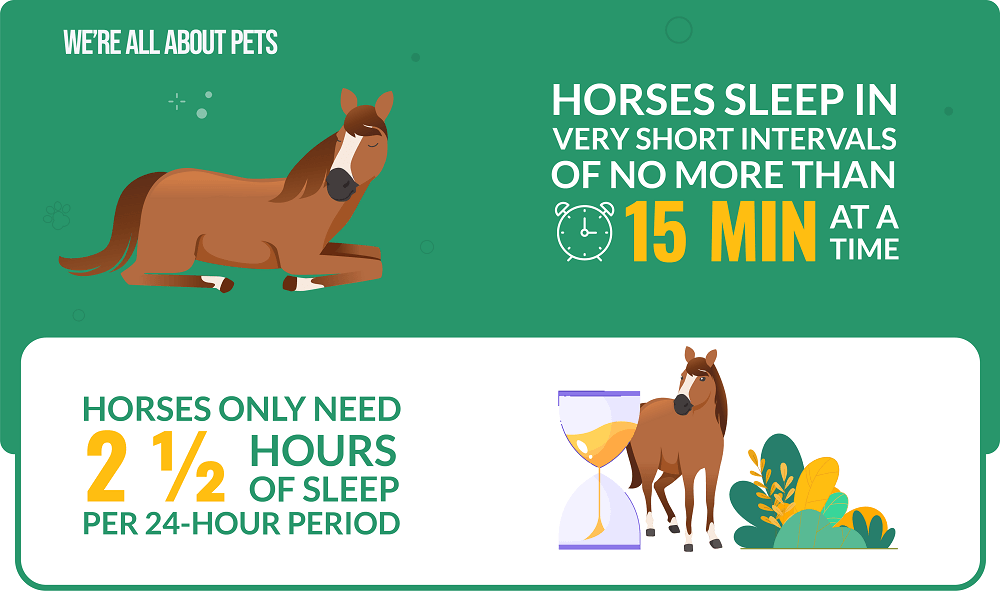
5. A horse’s heart beats 30 to 35 times per minute, so they have a much slower metabolism than smaller animals. This makes their by-weight dosage for medications much lower than for dogs and cats.
6. Rubbing CBD oil onto the gums of a horse can significantly reduce anxiety. It only takes about 25mg for a horse versus about 0.1mg per kilogram of bodyweight for dogs.
7. The record for the oldest horse is 62 years, achieved by a horse named Old Billy. The average life expectancy for horses is between 25 and 30 years.
8. Horses are measured in “hands.” One hand is roughly equivalent to 4 inches.
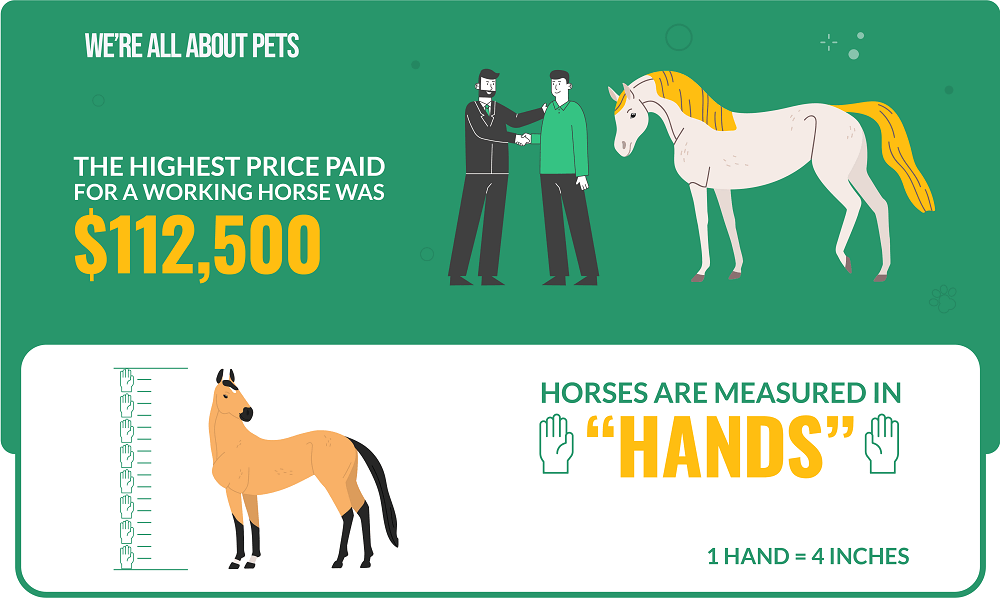
9. Horses can successfully be interbred with donkeys and zebras. A hybrid of a horse and a zebra is called a zebroid – they are often raised with domestic horses and donkeys.
10. Baby horses, called foals, have very strong survival instincts – they can stand, walk, and even trot within 2 hours of birth.
11. According to a 2010 study, horses are very intelligent and respond well to positive reinforcement training.
12. Male horses (stallions or geldings) have 4 more teeth than female horses (mares). Geldings and stallions have between 36 and 44 teeth while mares have between 36 and 40.
13. The average horse has 205 bones, though some breeds have more or fewer. The Arabian horse breed, for example, may only have 17 ribs compared to the standard 18.
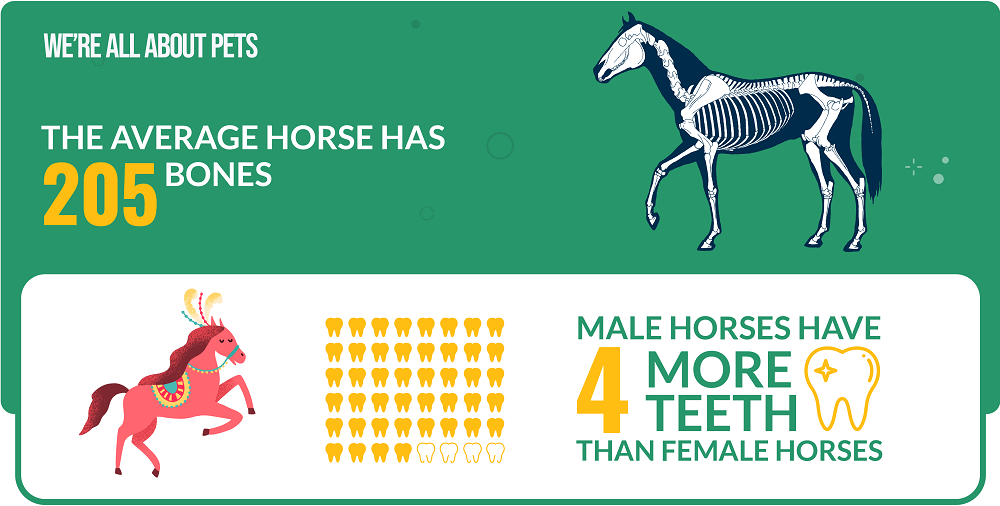
14. Small horses are known as ponies – they are a breed that grows no more than about 4 feet tall. Draft horses, by comparison, can grow up to 6 feet tall.
15. The top speed at which a horse has been clocked is 55mph. This record was made by a Quarter Horse. The fasted recorded race time for a Thoroughbred is 44 mph.
5 Horse Racing Statistics
- The highest valued horse in the United States was an Irish stallion named Galileo who had a market value of $199 million. Galileo fathered more than 300 foals and had an estimated $663,000 stud fee.
- Data from 2018 reveals that 23 racehorses died in just 3 months at Santa Anita Park in Arcadia, CA.
- The number of horses that die weekly on racetracks in the United States (roughly 10 per week in 2018) is more than double the rest of the world of racing.
- Hundreds of racehorses die each year. In 2018, data from The Jockey’s Club Equine Injury Database reveal the death of 493 Thoroughbred racehorses.
- Only about 2% of horse owners are racehorse owners. About 85% are recreational riders, 30% competitive riders, and 11% horse breeders.
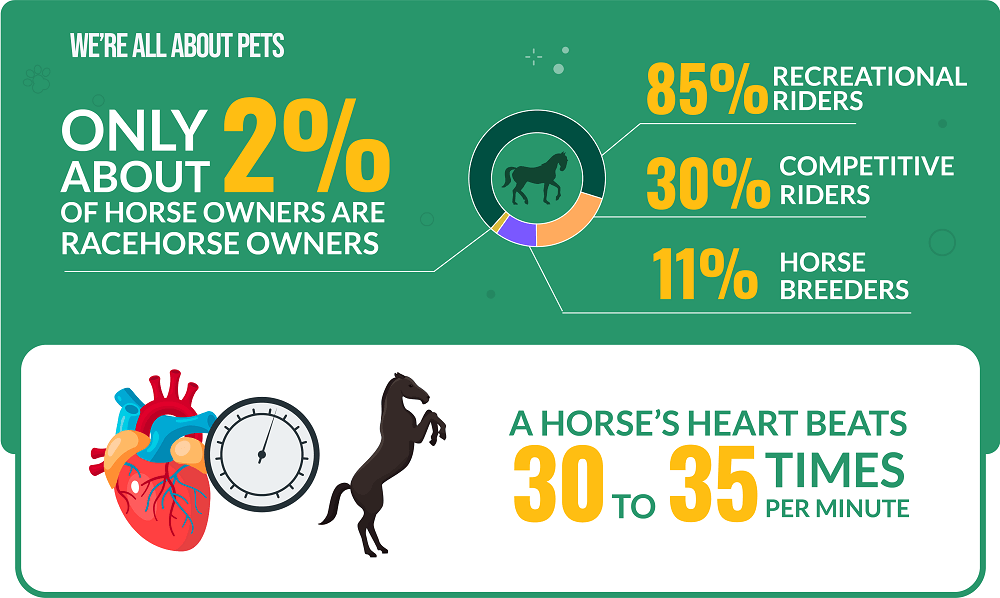
10 Horse Abuse Facts And Statistics
- According to PETA, as many as 24 horses experience fatal breakdowns on racetracks in the US each week. This doesn’t include horses the racing industry discards for loss of profitability.
- In the state of New York alone, more than 250 Thoroughbred racehorses were severely injured or experienced fatal breakdowns in 2015.
- During the Ice Age in Europe, horses were prey animals to early humans.
- Sadly, horses are the subject of a significant amount of animal testing. In 2018, nearly 10,500 tests were done on horses in the United Kingdom. Animal testing in the UK decreased by 7% between 2017 and 2018, but the annual total is still estimated around 3.5 million testing procedures.
- An estimated 8 million horses, mules, and donkeys died during WWI.
- The United States sent over 1 million horses and mules to Europe during WWI.
- When WWI broke out, the British Army had only 25,000 horses. They purchased an additional 115,000 through the Horse Mobilization Scheme.
- In 1920, the tractor began to overtake horse power on American farms, causing many farmers to sell their hoses to pet food canneries.
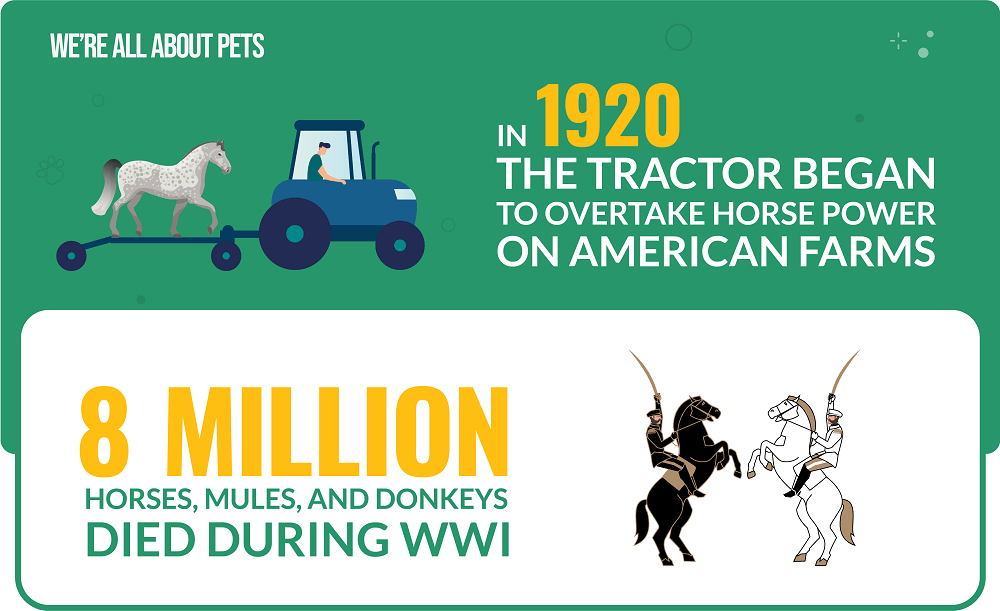
9. Until 2007, slaughter facilities still existed in the United states that dealt with horse meat. They only closed because the USDA no longer had the funds necessary to inspect them.
10. Because horse meat is still consumed in Europe, Russia, and Japan, live horses are still exported to Canada or Mexico for slaughter. Over 81,000 horses were exported from the US in 2017 alone.
International Horse Facts And Statistics
- The very first horses are said to have originated in North America and may have evolved on Earth as long as 50 million years ago.
- Wild horses became extinct in North America about 10,000 years ago but were eventually reintroduced by European colonists in the 1500s.
- There is only one species of domestic horse but around 400 different breeds worldwide.
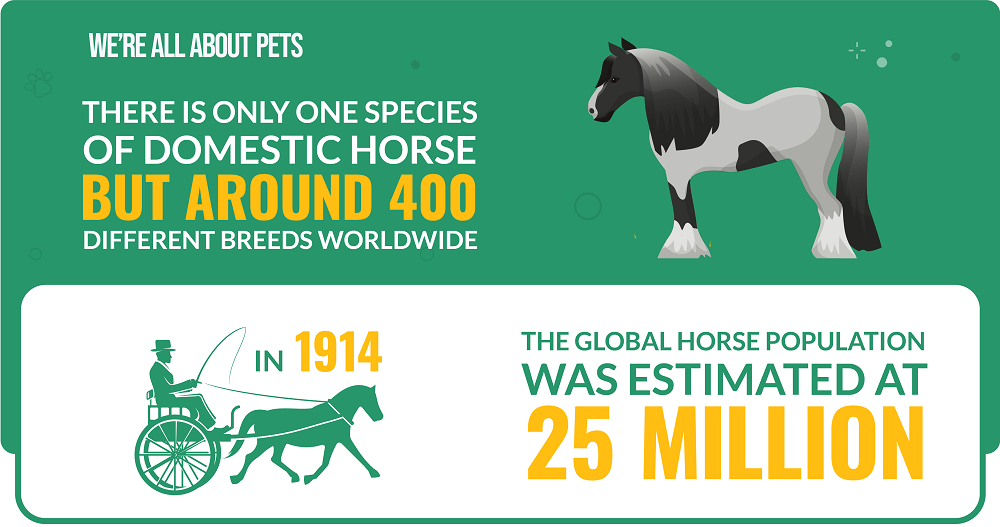
4. In 1914, the global horse population was estimated at 25 million. More than half of those can be found in Russia and in the United States.
5. The European Equestrian Federation estimates a total horse population around 4.5 million. About 1.7 million of them are registered for sporting purposes with national equestrian federations.
6. According to data collected between 2018 and 2019 by the Coalition for the Protection of Racehorses, 122 horses died on race tracks in Australia.
7. The most common cause of death for the aforementioned statistic (61 horses) were front limb injuries resulting in the horse being killed. Other causes included cardiac failure and bleeds.
8. The last wild horse breed in existence, Przewalski’s horse, is endangered but has recently been found to be thriving in the Chernobyl Exclusion Zone.
9. Other than the United States, nine other countries have horse populations over a million: China, Mexico, Brazil, Argentina, Colombia, Mongolia, Ethiopia, Russia, and Kazakhstan.
10. Guam and Grenada have the two lowest horse population totals at just 20 and 30, respectively. Rwanda and St. Helena reported no hoses at the time.








